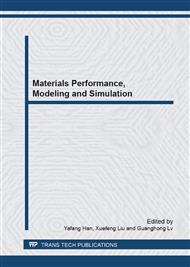p.243
p.250
p.255
p.260
p.268
p.274
p.282
p.287
p.294
The Metal Flowing Behaviors and Die Bearing Band Optimization of a Large Al-Alloy Extrusion Profile
Abstract:
In this paper, in order to optimize the extrusion die action and to control quality of an industrial large Al-profile, the effects of die bearing band on the metal flowing behaviors are analyzed by applying some special methods, including designing the bearing band of the die as inclined plan and designing the geometry model as detachable structure. The velocity field showed that the metal flowing velocities in central and left-side locations were higher than that in groove location. The reasonable size-configuration of the extrusion die bearing band was obtained, and the defect of the right-direction bending was able to be removed effectively. The inclined bearing band structure, detachable geometry model and configuration method based on velocity balance proposed in this paper provided a valuable reference to design and to optimize this kind of solid Al-alloy large profile.
Info:
Periodical:
Pages:
268-273
Citation:
Online since:
March 2013
Authors:
Price:
Сopyright:
© 2013 Trans Tech Publications Ltd. All Rights Reserved
Share:
Citation:


